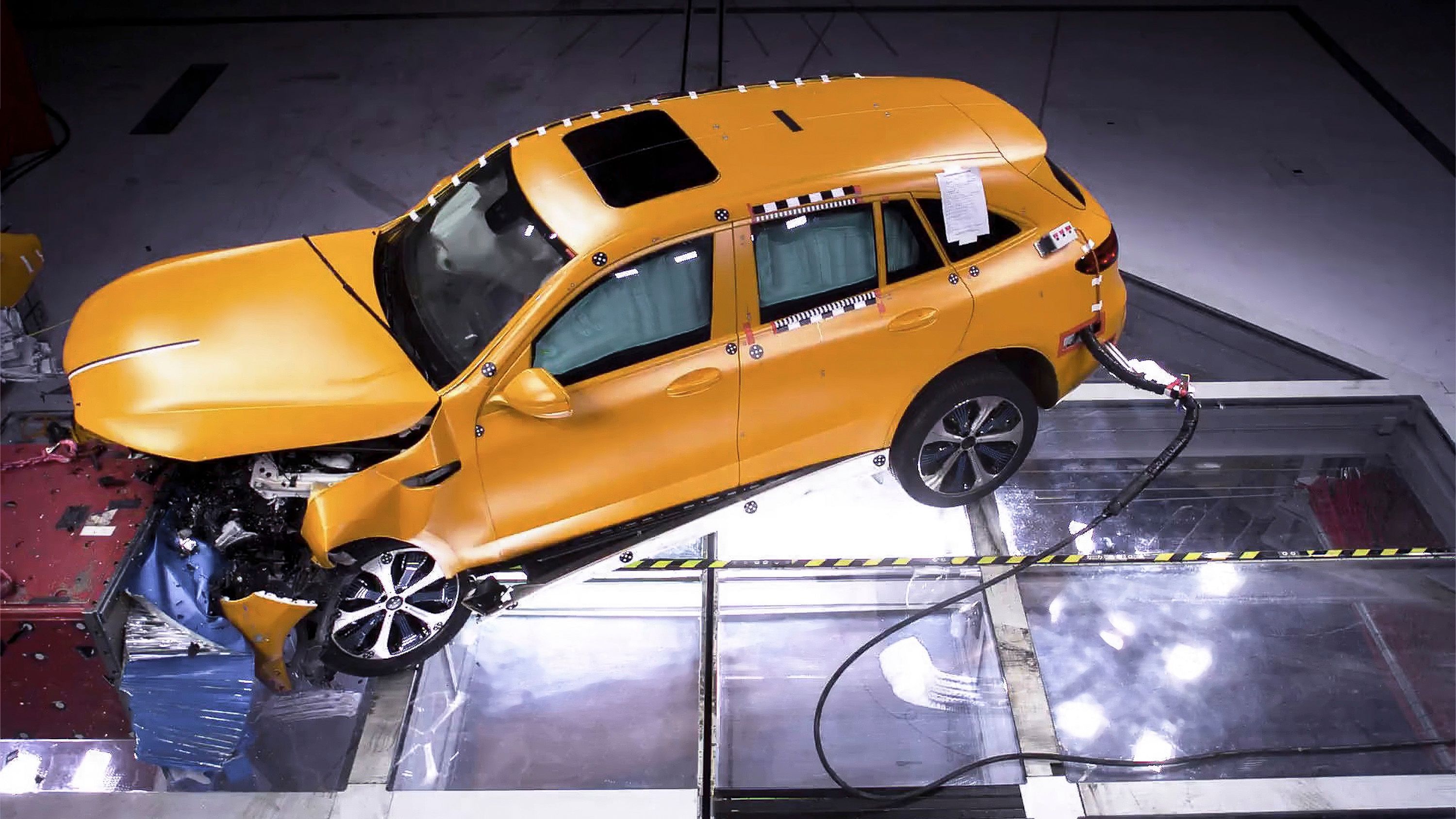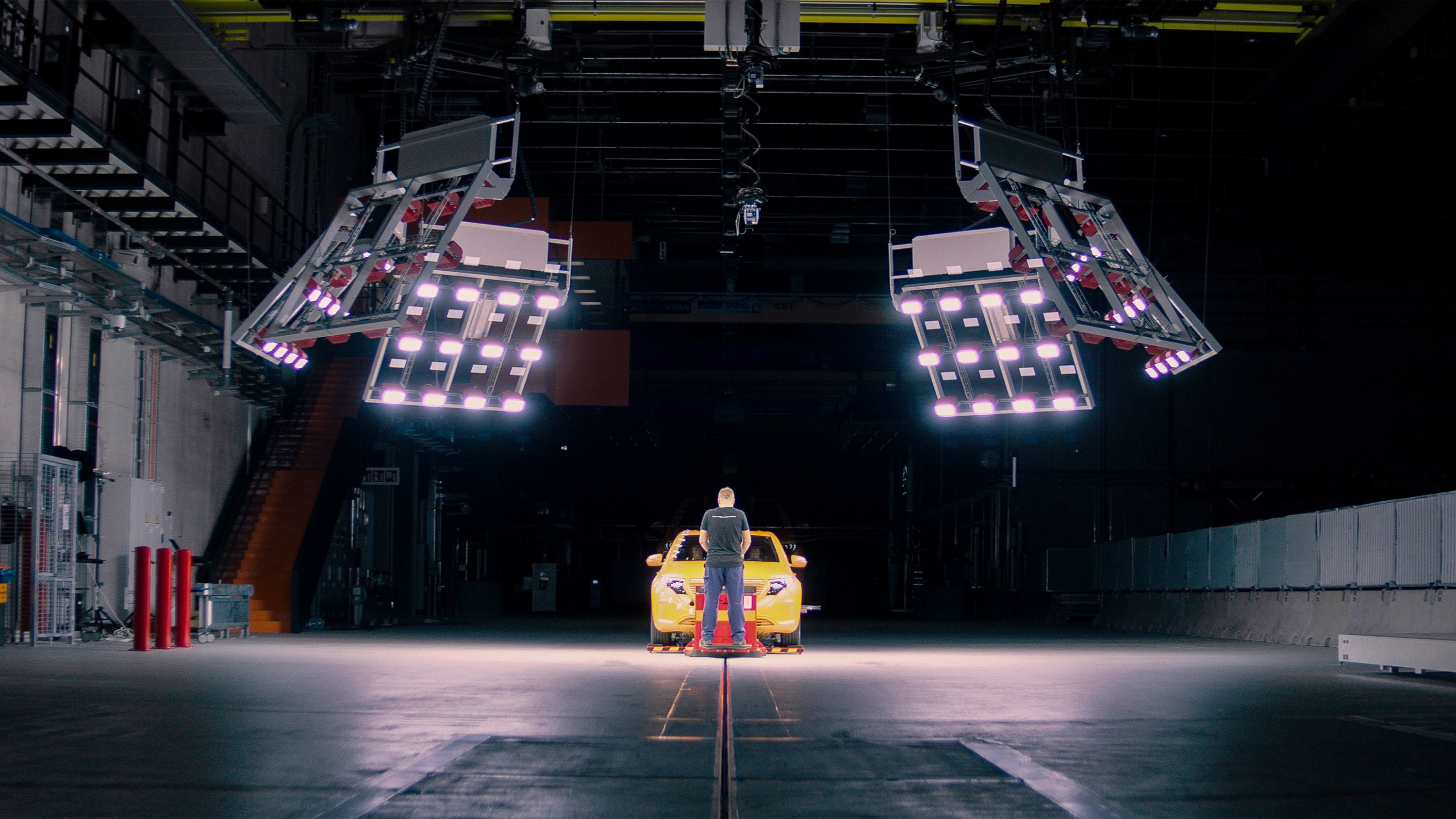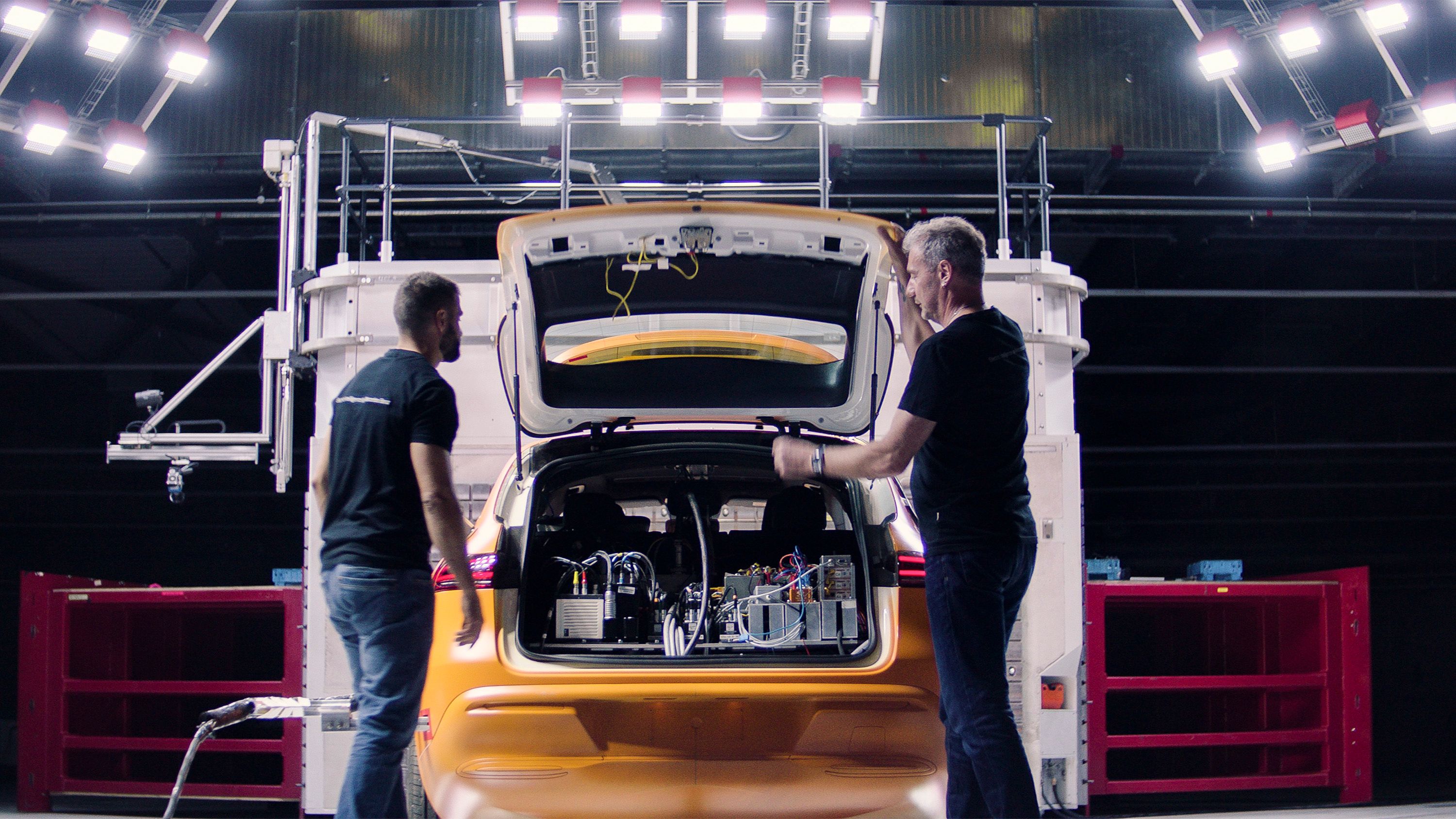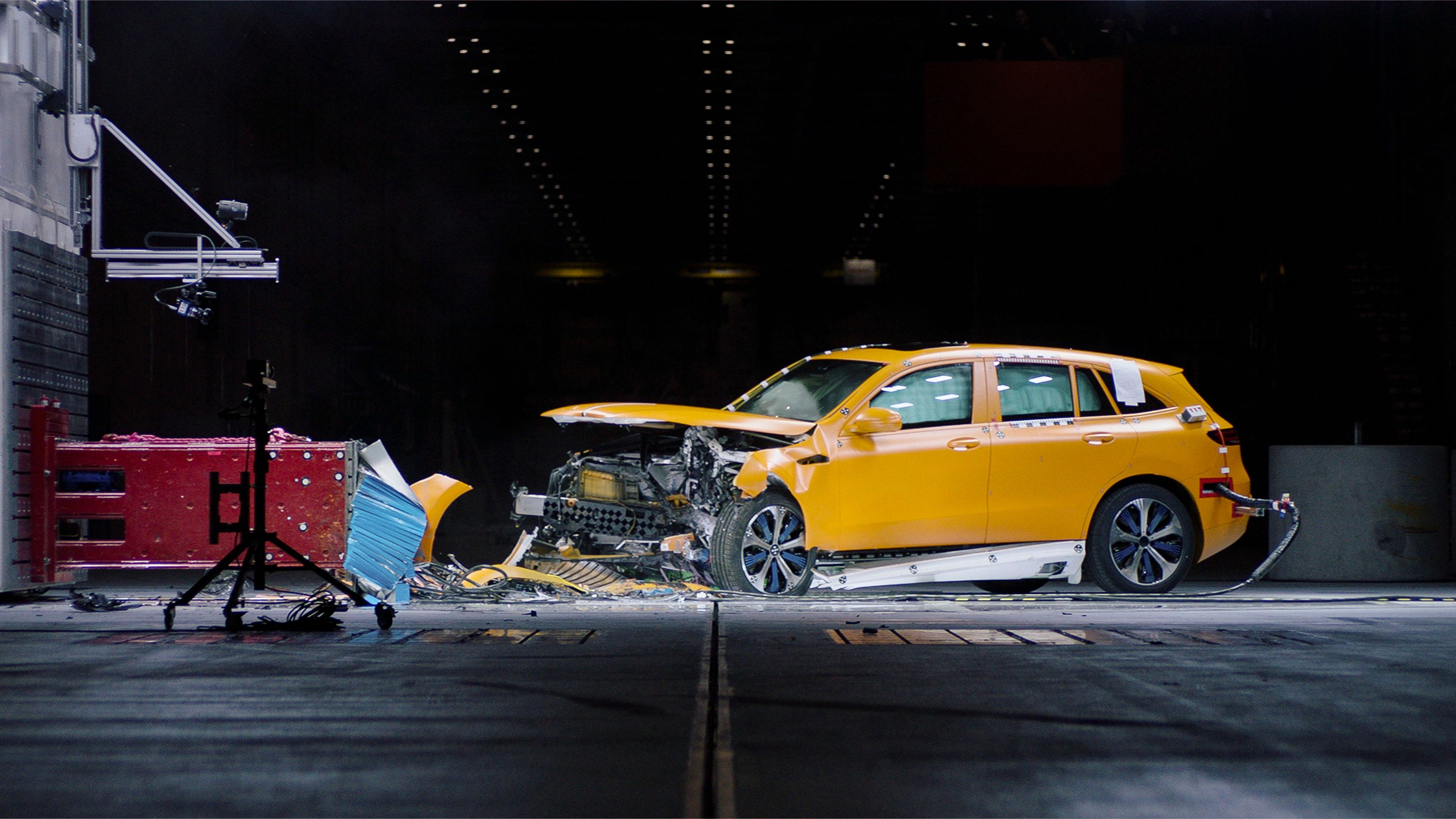The Mercedes-Benz EQC is the first all-electric model part of the EQ family, Mercedes' range of vehicles designed from the get-go with electrification in mind. The EQC hasn't yet reached third-party crash testers such as the EURO NCAP or the NHTSA, but the car apparently passed with flying colors the German automaker's own internal crash tests.
Unveiled publically at this year's Paris Motor Show, the EQC is Mercedes' first bet for the new-generation EV market. It's a compact luxury SUV, similar to the gas-powered GLC-Class, that will be on the market next year. Mercedes-Benz revealed that it already put the EQC up against a few rigid structures for some in-house evaluatory crash tests at the Mercedes-Benz Technology Center for Vehicle Safety (TFS).
How many will order the EQC in that particular shade of orange?
Mercedes-Benz opened the reservation book for the EQC over 12 months ago. More recently, the first all-electric compact luxury SUV built by Mercedes-Benz was presented in Paris and, now, those customers that have already pre-ordered one can see how it copes with hitting a wall at a moderate speed.
With that being said, the German manufacturer claims that it “applied stringent safety standards to the battery and all component parts carrying electrical current.” Mercedes also states that their own TFS crash-testing facility is the most advanced in the world and this helped them perfect some of the SUV's safety features.
As an example, a new subframe was developed to surround the drive components up front, supported by the standard mounting points. The battery pack itself is also nestled within a frame that's part of the car's crash structure, and that keeps the battery in place in case of a serious side impact. There's also protection in the frontal area of the battery as well as a general shutdown system that activates automatically in case of a crash.
Also, the charging procedure is stopped if the car gets hit at a quick-charging station DC station. The high-voltage system can also be de-activated manually through a number of kill switches that can be reached by emergency personnel, a safety feature that's been on racing cars for decades now. Mercedes also crash-tested the battery at the Deutsche ACCUMOTIVE center where a number of extreme scenarios were simulated such as extreme overheating, the heavy contact with foreign objects and others alike.
Beyond the tests that were issued for the electric system, Mercedes' team also tested other safety features of the car such as the seatbelts, the plethora of airbags that surrounds the cabin, and other safety solutions like the automatic activation of an emergency call that readily notifies rescue services.
After all these systems were put to the test, Mercedes vaguely boasted that "high levels of crash safety” were achieved by the EQC. What does that really mean? We don't know because Mercedes didn't release any data or numbers so that we can compare with other Mercedes models or models from rivaling manufacturers. I guess we have to wait and see what other crash-testing organizations have to say about the EQC, but it's safe to say - pun intended - that it's no Fiat Panda!
That's not only because the first member of the EQ family - one of up to 10 new models by 2022 - doesn't crumble like the tiny Fiat, but also because no Panda could ever dream of having 402 horsepower and 564 pound-feet of torque on tap. Those are the numbers of the EQC 400 that comes with all-wheel drive, a modest top speed of 112 mph, and a range of just under 300 miles from its 80 kWh battery pack. The latter of which, by the way, can be fast-charged from 10 to 80% in just 40 minutes while energy recuperation under braking is a standard feature.
Further Reading
Read our full review on the 2020 Mercedes-Benz EQC.
Read our full review on the 2016 Mercedes‑Benz "Generation EQ" Concept.




